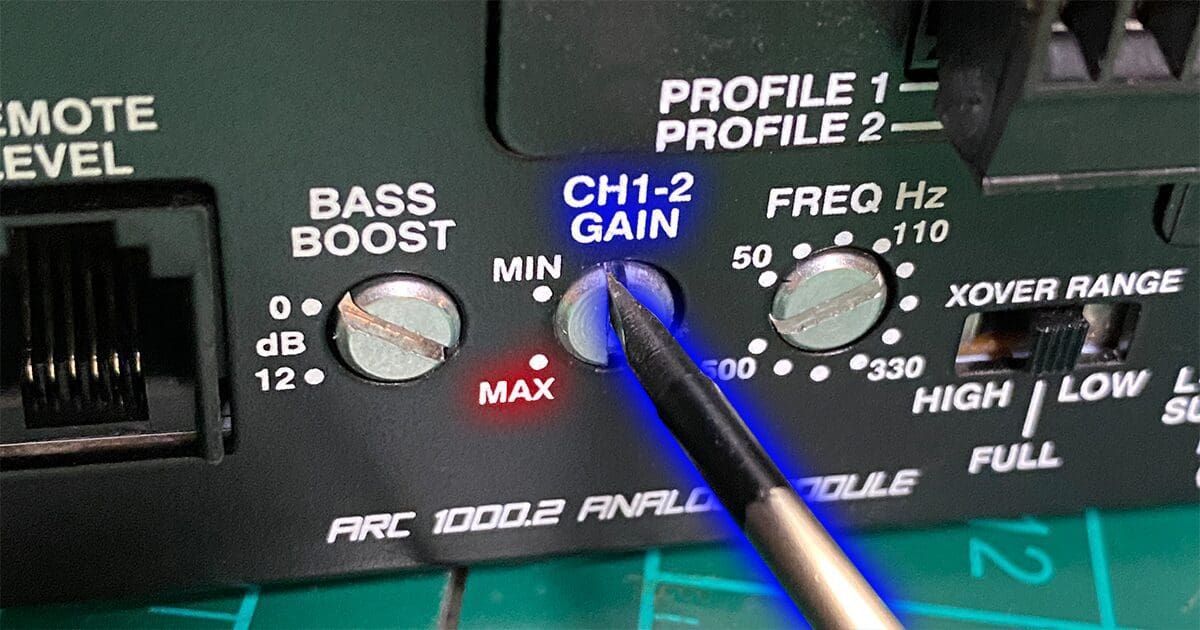In March 2022, we published an article that demonstrated how high-quality amplifiers often increase the noise they output at high gain settings. I’m somewhere between shocked, confused and impressed at the feedback we got on the article. So, as a bit of a follow-up, let’s crush a few of the myths I read in the Facebook comments.
Myth 1: Gains Should Be Set Based on Speaker Power Ratings
While I love the concept, setting the gain controls on a car audio amplifier to limit the amount of power sent to a speaker is nearly impossible. You can reverse engineer a voltage level from a power rating, and you might be able to set a subwoofer amplifier to protect the driver. That said, the user can’t have a way to turn up the bass level on the radio or amplifier higher than what was used for the configuration. What about midrange drivers that are tested using pink noise? A 4-ohm door speaker rated for 100 or 120 watts of power can’t handle 20 or 22 volts of signal. What if the speaker impedance is lower than you thought? A 3-ohm speaker would see 133 or 160 watts at the same voltages. The amp can’t produce that much power so the signal might distort.
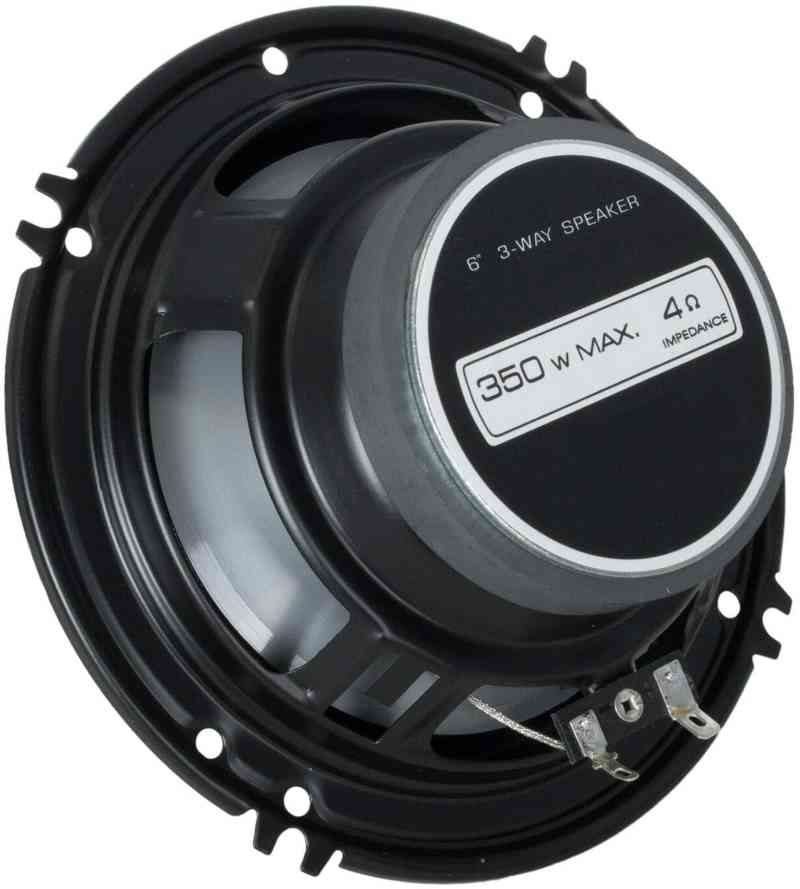
Myth 2: High Gain Settings Mean More Distortion
I read that there is a correlation between high gain settings and distortion. The commenter went on to state that distortion damages speakers. This is the mother of all cans of worms. There is no direct relationship between gain settings and distortion, only noise. Setting an amplifier to produce full output with a 1-volt RMS signal versus a 4-volt signal is, as that previous article explained, likely only to increase noise. Distortion does change with output level, but different gain settings don’t affect this.
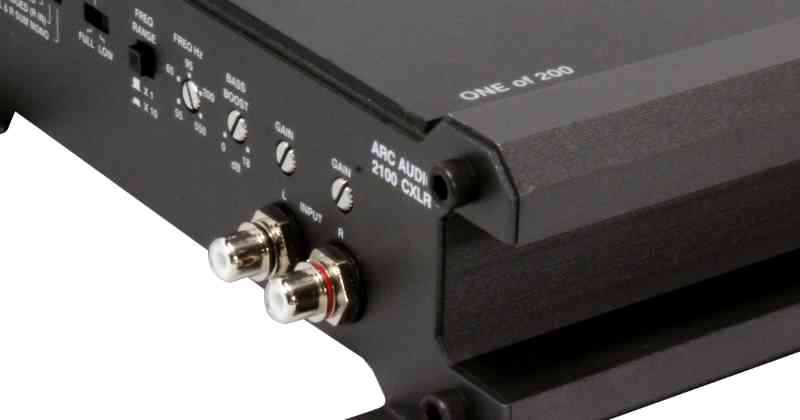
Myth 3: There’s a Correlation Between Required Sensitivity Settings and Product Quality
Perhaps the most bizarre comment I read was a statement that only low-quality amps could or should be used with the gain controls turned all the way down. I had to read and re-read this a half-dozen times to understand the comment. I can’t think of any correlation between amp quality and sensitivity settings for the life of me. Perhaps an amplifier that doesn’t have enough gain might need more voltage to produce the same output, or an amp with too much gain might need to be set lower. But, if there are two 500-watt amplifiers, each with sensitivity controls that allow the amp to produce full power with input signals between 200 millivolts and 6 volts, the quality of the amps doesn’t factor into the settings.
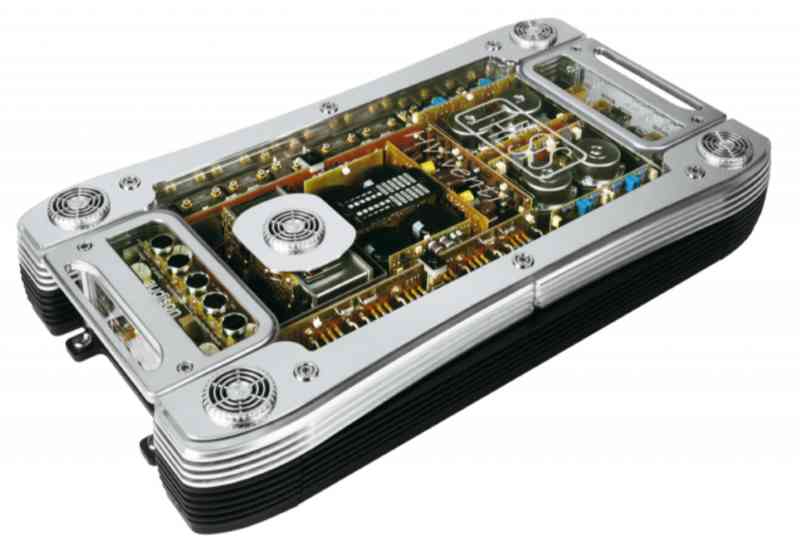
Myth 4: The Guitar Amplifier Distortion Correlation
When creating music as a musician, there are no rules about how things should sound. If you want your acoustic guitar to sound accurate and detailed or an electric guitar to sound scratchy and harsh – whatever you and the recording engineer agree on is “right.” I often see folks who play electric guitars mention that more gain correlates to more distortion. It does if the signal is over-driven. Distortion pedals and tube amplifiers add significant harmonic content to the output of an electric guitar. In fact, the design of a guitar pickup can change the way the instrument sounds.
When it comes to reproducing music, we don’t want to add distortion. Instead, we want to recreate what the recording engineer heard in the control room with as much accuracy as possible. Sure, some people like more bass or treble, but adding high levels of distortion isn’t good or desirable.
If you’re playing an electric guitar and are looking for a certain sound, cranking the input gain on your Fender guitar amp might do what you want. That’s not what the gain control on a car audio amplifier is for.

Myth 5: There Is One Correct Gain Setting for Every Amp
Setting levels in a car audio system, especially one that is designed to sound good and match a target frequency response curve, adds some complexity to the amplifier configuration process. If you have a large subwoofer amplifier and many subwoofers, you might need the amp driving your midrange or midbass speakers to produce more relative output. If you have a DSP, you can increase the output signal to the mids so they can keep up. If you don’t have a signal processor, you have to turn up the gain on the amp. While it might be better to turn down the sensitivity of the subwoofer amp, this isn’t always possible. Achieving good balance across multiple amplifiers and different speakers can be tricky, especially when there is no DSP in the audio system.
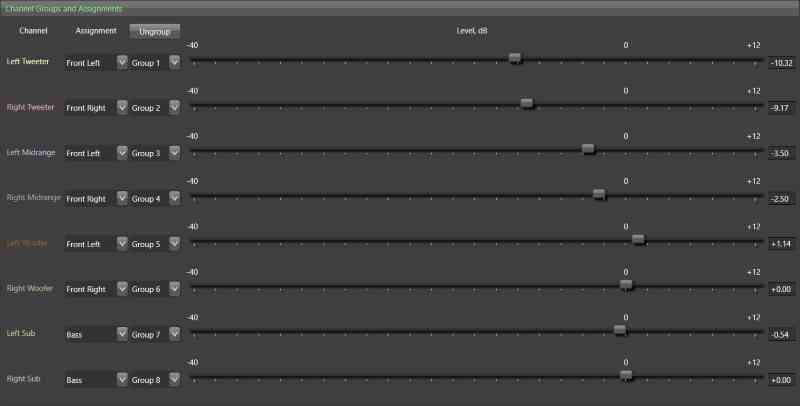
Proper Gain Settings Minimize Unwanted System Noise
Here’s the bottom line on proper car audio amplifier gain settings: You want the gains turned down as low as possible while still allowing the system to play loudly enough without distorting. A lower setting might limit system output. A higher setting may add noise or cause an amplifier to distort its output. If you can’t turn the volume up on your radio most of the way (unless you are using the speaker outputs) without the system distorting like crazy, the gains on your amps are likely set too high.
